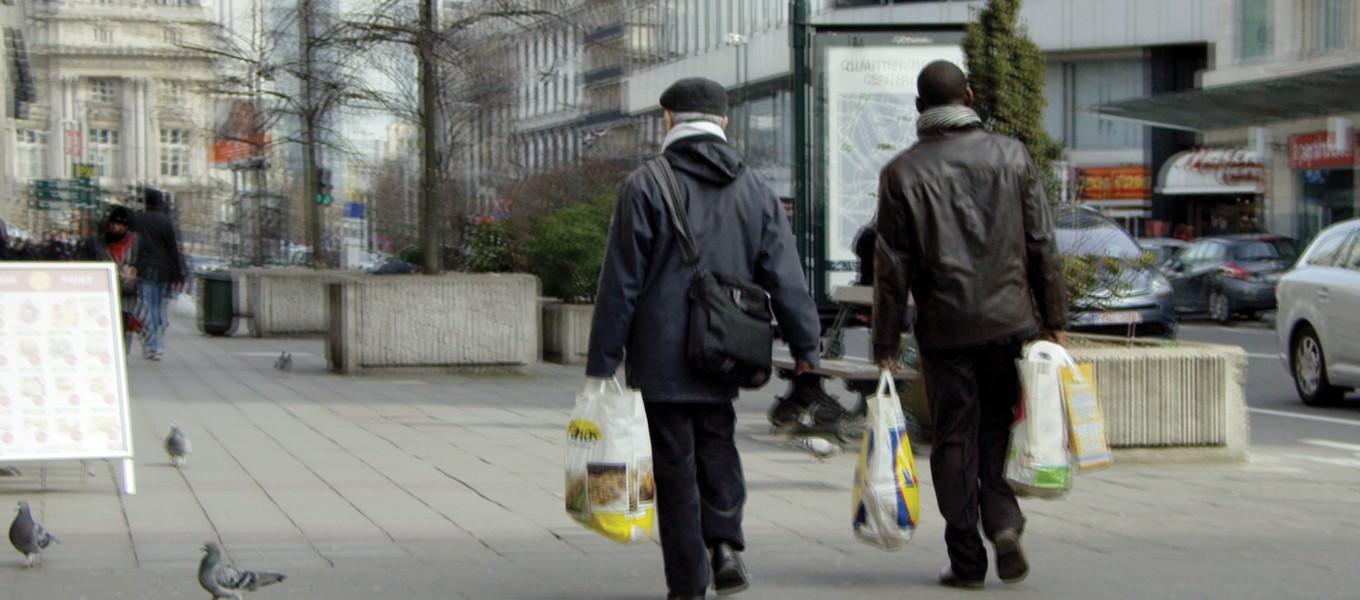Noé Grenier
Look Thru Other Side - Installation - 2015
presented as part of the exhibition Panorama 17

Look Thru Other Side is a video installation which questions the moving image and its deployment in space through an experience of stereoscopy.
The film is constructed by applying a process of desynchronisation to the filmed action. Imagine that one of your eyes sees “later” than the other: your brain will try to establish a natural connection between the two out-of-phase images. The stereoscopic couple – which produces the illusion of relief – is constructed by the projection redoubled by the same sequence of animated images on the same screen, with a slight delay between the two projections.
This attempt to recreate relief is applied to two types ofimages: amateur archives shot on film and contemporary street images filmed digitally. Our gaze thus moves between old-fashioned images of the private sphere and contemporary ones of a public, continuous sphere. Whereas the banality of the street creates a space where distances grow, inviting contemplation or provoking unpredictable visual situations, the amateur images break this continuity and seek to surface at the moment of projection. Trying to revive images by restoring their potential physical reality is possibly only if we accept a certain form of wrenching, which each shot averts, but not without bringing its own trembling.
Noé Grenier
Noé Grenier graduated from the Ecole supérieure des Beaux-Arts de Montpellier Agglomération in 2011. Since then, he has concentrated his practice on the re-appropriation of images, either working from the classics of genre cinema or from photographs and videos collected on the internet.
His video practice questions the time constructions specific to each register of images, and the spectator's perception of these same images. With the cut, edit, past process, or with out of sync and repetitions, his works try to "extend the notion of seeing" referring to conceptions of time and movement in Bergson and attempting thus to question the perception of movement in the video image as a "series of still images that one's eye has to activate".
Conscious of the materiality of the image and its document status, Noé Grenier also experiments with transferring digital images through various traditional mediums. He underlines the problems linked to copyright and the frontier between private space and public space on the Internet by confronting the methods of historical representation of photography and video art.
